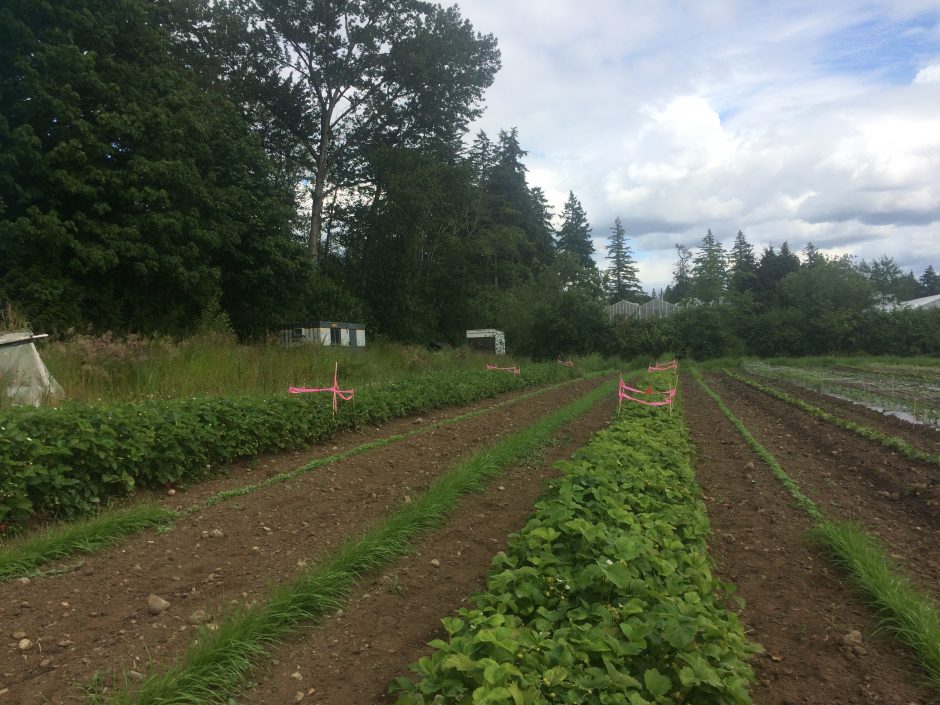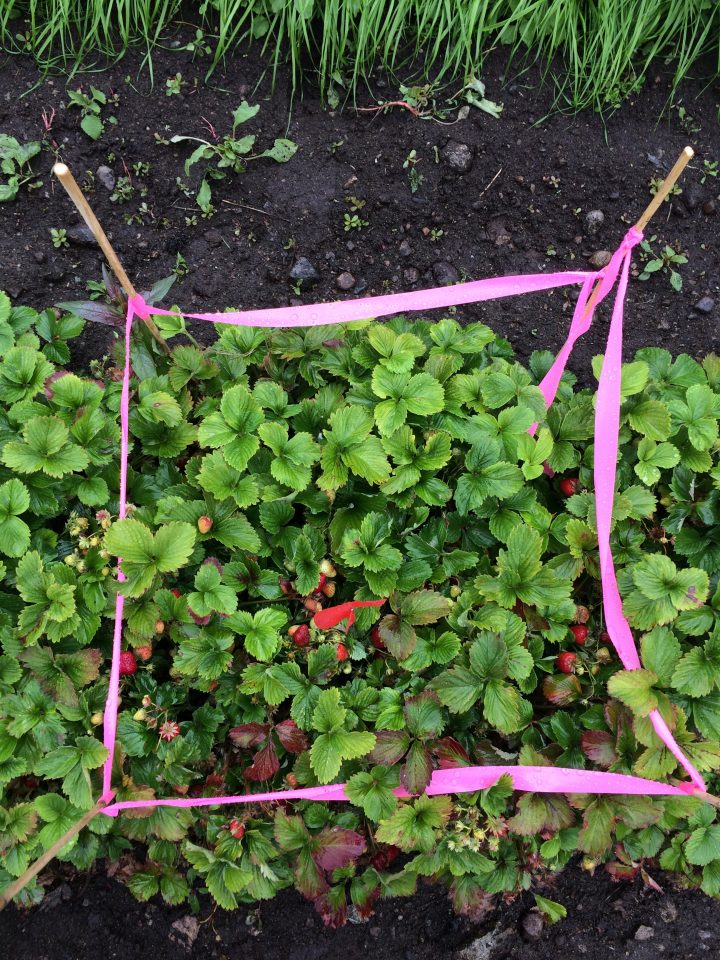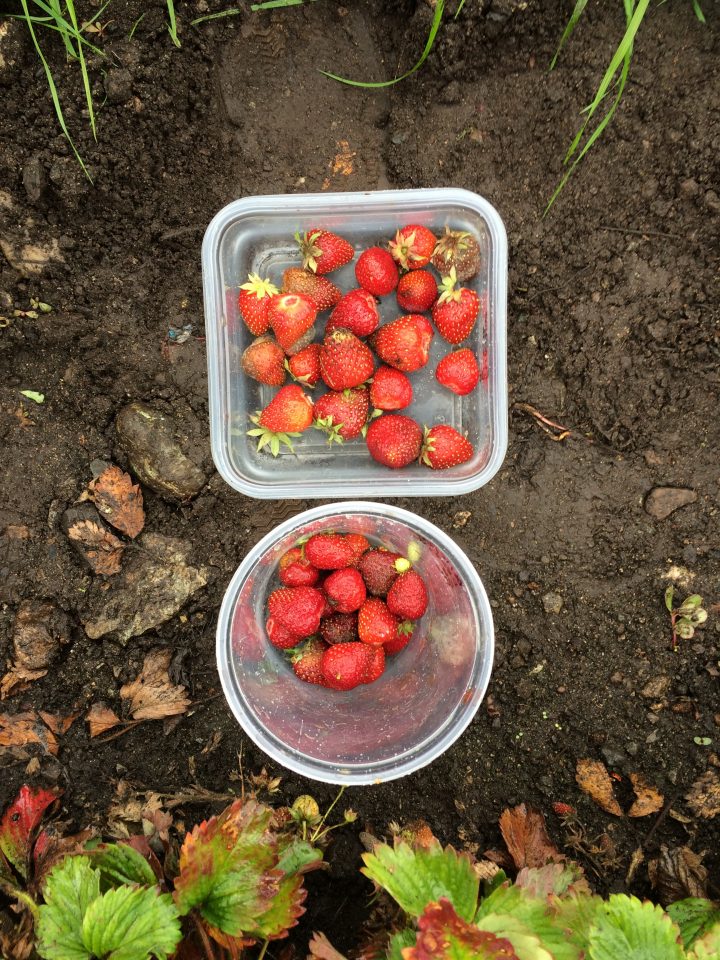Project lead: Matthew Tsuruda, Taylor Weishaar, Dr. Pierre Girod, Martina Clausen
The goal of this study is to determine the effects of intercropping strawberry plants with plots of sweet alyssum on the infestation levels of spotted wing drosophila (Drosophila suzukii). Better known as SWD, this invasive fruit fly represents a serious threat to the berry growing industry in British Columbia due to its habit of laying its eggs in ripe or ripening fruits. One potential solution to this problem is to attract the natural enemies of SWD to berry crops by intercropping with certain plants. Sweet alyssum has been shown to attract both predators and parasitoids of SWD, including hoverflies and several species of wasp parasitoids. To test whether this could be an effective management technique, 3 rows of strawberries at the UBC research farm were broken up into several equal plots and intercropped with either sweet alyssum or a control ryegrass/clover mix. Every week, researchers harvested every ripe strawberry from a half meter square transect in each plot. These berries were then evaluated in one of two ways. Half were incubated in Ziploc containers for several weeks with emerging adult SWD counted 3 times weekly. The other half were submerged in a saltwater bath and the emerged larvae counted. Should the data show that sweet alyssum intercropped plots had lower numbers of SWD associated with them, this could be a potential option for growers to reduce their reliance on chemical pesticides in the management of this invasive pest.

Strawberry and Sweet Alyssum rows
(Photo: Martina Clausen)
Strawberry sampling quadrants (Photo: Martina Clausen) 
Collected Strawberries (Photo: Martina Clausen)